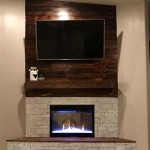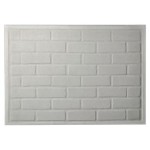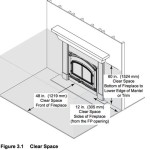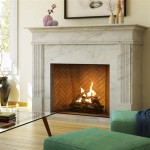Stone Patio Fireplace Kits: A Comprehensive Guide
Stone patio fireplace kits offer a convenient and aesthetically pleasing way to add warmth and ambiance to outdoor living spaces. These kits typically include pre-cut or modular stone components designed for straightforward assembly, simplifying what would otherwise be a complex and time-consuming construction project. The appeal lies in their ability to transform a patio into a cozy focal point, extending the usability of outdoor areas well into the cooler months.
This article provides a comprehensive overview of stone patio fireplace kits, covering essential aspects such as types, materials, installation considerations, maintenance, and relevant regulations. Understanding these elements is crucial for selecting the right kit and ensuring a successful and safe installation.
Types of Stone Patio Fireplace Kits
Stone patio fireplace kits are available in a variety of styles and configurations to suit different aesthetic preferences and spatial requirements. The primary variations lie in the shape, height, and overall design of the fireplace. Some common types include:
Modular Kits: These kits consist of pre-cast concrete blocks or stones designed to interlock and stack easily. They offer a high degree of versatility and can be assembled with minimal cutting or modification. Modular kits are often a good choice for DIY enthusiasts looking for a simpler installation process.
Pre-Cut Stone Kits: Unlike modular kits, these feature individually cut stones that are specifically shaped and sized for the fireplace design. While requiring more careful placement and potentially some mortar work, they often result in a more authentic and visually appealing appearance. The pre-cut nature of the stones still simplifies the process compared to sourcing and cutting individual stones from scratch.
Chimney-Style Fireplaces: Characterized by a tall, prominent chimney extending upwards from the firebox, these fireplaces provide efficient smoke ventilation and a classic aesthetic. They are well-suited for larger patios and areas where a strong visual statement is desired.
Fire Pits with Stone Surrounds: While technically not a fireplace in the traditional sense, these kits offer a similar ambiance and warmth. They typically involve a metal fire pit insert surrounded by a decorative stone veneer or wall, creating a more open and communal fire experience.
Corner Fireplaces: Designed to fit snugly into a corner of a patio, these fireplaces maximize space efficiency and create a defined seating area. They are ideal for smaller patios or areas where optimizing available space is crucial.
The selection of a particular type depends on factors such as the size of the patio, the desired aesthetic, the level of installation expertise, and budget considerations.
Materials Used in Stone Patio Fireplace Kits
The materials used in stone patio fireplace kits significantly impact their durability, appearance, and overall cost. Common materials used in construction include:
Concrete: Pre-cast concrete is a widely used material due to its affordability, durability, and versatility. It can be molded into various shapes and textures to mimic the appearance of natural stone. Concrete is also relatively easy to work with during installation.
Natural Stone: Options like flagstone, limestone, granite, and slate offer a premium aesthetic and inherent durability. Natural stone fireplaces tend to be more expensive than concrete alternatives but provide a timeless and elegant look.
Manufactured Stone Veneer: This material combines the aesthetic appeal of natural stone with the affordability and lightweight properties of concrete. It consists of thin layers of stone veneer adhered to a concrete backing, making it easier to install and less costly than solid natural stone.
Metal Firebox Inserts: Many kits incorporate a metal firebox insert made of steel or cast iron to contain the fire and protect the surrounding stone structure. These inserts improve fire safety and efficiency by properly channeling heat and smoke.
Mortar: A crucial component for securing the stone or concrete elements together, mortar must be heat-resistant and designed for outdoor use. The type of mortar used depends on the specific stone or concrete material of the kit.
The choice of materials should consider factors such as desired aesthetic, budget, local climate conditions, and maintenance requirements. Natural stone generally requires less maintenance than concrete but is more susceptible to staining and discoloration. Concrete may require periodic sealing to protect against water damage.
Installation Considerations and Safety
Installing a stone patio fireplace kit requires careful planning and adherence to safety guidelines. Improper installation can lead to structural instability, fire hazards, and code violations. Key considerations include:
Site Preparation: A level and stable foundation is essential for ensuring the longevity and safety of the fireplace. This typically involves excavating and compacting the ground, followed by pouring a concrete slab or laying a bed of gravel and pavers. The foundation must be large enough to support the weight of the entire fireplace structure.
Local Building Codes and Permits: Before beginning installation, it is crucial to check local building codes and obtain any necessary permits. These regulations often specify minimum clearances from combustible materials, chimney height requirements, and other safety standards. Failure to comply with these regulations can result in fines or the need to dismantle the fireplace.
Clearance to Combustibles: Maintaining adequate clearance from combustible materials such as walls, fences, and overhanging trees is critical for preventing fires. Building codes typically specify minimum clearance distances, which should be carefully followed during installation. Consider the direction of prevailing winds when determining the placement of the fireplace in relation to potentially flammable structures.
Chimney Height and Draft: The height of the chimney is essential for ensuring proper draft and efficient smoke ventilation. An insufficient chimney height can result in smoke backing up into the patio area, creating a nuisance and potential health hazard. Building codes often dictate minimum chimney heights based on the surrounding structures and rooflines.
Proper Mortar Application: When using mortar, it is crucial to follow the manufacturer's instructions carefully. The mortar should be thoroughly mixed and applied evenly between the stone or concrete elements to ensure a strong and watertight bond. Insufficient mortar or improper application can lead to structural weakness and water infiltration.
Firebox Installation: If the kit includes a metal firebox insert, it must be installed according to the manufacturer's instructions. The firebox should be securely anchored within the stone structure to prevent movement and ensure proper heat containment.
Gas Line Installation (if applicable): If the fireplace has a gas line for ignition, a qualified gas technician must install it and ensure that all connections are leak-tested and properly secured. Incorrect gas line installation can create a significant fire or explosion hazard.
Safety Precautions During Construction: Wear appropriate safety gear, including gloves, safety glasses, and a dust mask, during the installation process. Use caution when lifting heavy stones or concrete elements, and enlist assistance if necessary. Ensure that the work area is well-ventilated, especially when working with mortar or cutting stone.
For those unfamiliar with masonry work or gas line installation, it is highly recommended to hire a qualified contractor to ensure a safe and code-compliant installation. Attempting to install a fireplace without the necessary expertise can be dangerous and costly in the long run.
Maintenance and Care
Proper maintenance and care are essential for extending the lifespan and maintaining the aesthetic appeal of a stone patio fireplace. Regular cleaning and inspection can prevent damage and ensure safe operation. Recommended maintenance practices include:
Cleaning the Firebox: Regularly remove ashes and debris from the firebox to prevent buildup and improve airflow. A clogged firebox can reduce the efficiency of the fireplace and increase the risk of smoke backflow.
Inspecting the Chimney: Periodically inspect the chimney for cracks, loose stones, or other signs of damage. Chimney repairs should be addressed promptly to prevent water infiltration and structural problems. A professional chimney sweep can also inspect and clean the chimney to remove creosote buildup, which is a flammable substance that can increase the risk of chimney fires.
Sealing Stone or Concrete: Applying a sealant to the stone or concrete surface can help protect it from staining, water damage, and weathering. Choose a sealant appropriate for the specific type of stone or concrete used in the fireplace. Reapply the sealant according to the manufacturer's recommendations.
Mortar Joint Inspection and Repair: Regularly inspect the mortar joints for cracks or crumbling. Damaged mortar joints should be repaired promptly to prevent water infiltration and structural instability. Tuckpointing, the process of removing and replacing damaged mortar, is a common maintenance task for stone and brick structures.
Protecting from the Elements: During periods of prolonged inactivity or inclement weather, consider covering the fireplace with a waterproof cover to protect it from rain, snow, and ice. This can help prevent water damage and extend the lifespan of the materials.
Avoiding Harsh Cleaners: Use mild, non-abrasive cleaners to clean the stone or concrete surface. Avoid using harsh chemicals or abrasive scrubbers, which can damage the finish or erode the mortar joints.
Tree and Vegetation Management: Keep trees and vegetation trimmed back from the chimney and fireplace structure to prevent leaves, branches, and other debris from accumulating and posing a fire hazard.
By following these maintenance practices, homeowners can ensure that their stone patio fireplace remains a safe, beautiful, and functional addition to their outdoor living space for many years to come.

Outdoor Fireplace Kits Stonewood S Cape Cod Ma Nh Ct

Outdoor Fireplace Kits Stonewood S Cape Cod Ma Nh Ct

Diy Outdoor Fireplace Kit Fremont Makes Hardscaping And Easy

Outdoor Fireplace Kits Stonewood S Cape Cod Ma Nh Ct

Outdoor Fireplace Kits Masonry Stone

Diy Outdoor Fireplace Kit Fremont Makes Hardscaping And Easy

Outdoor Fireplace Kits Masonry Stone

Outdoor Fireplace Kits Southwest Stone Supply

Diy Outdoor Fireplace Kit Fremont Makes Hardscaping And Easy

Discover Customizable And Affordable Fireplace Kits








